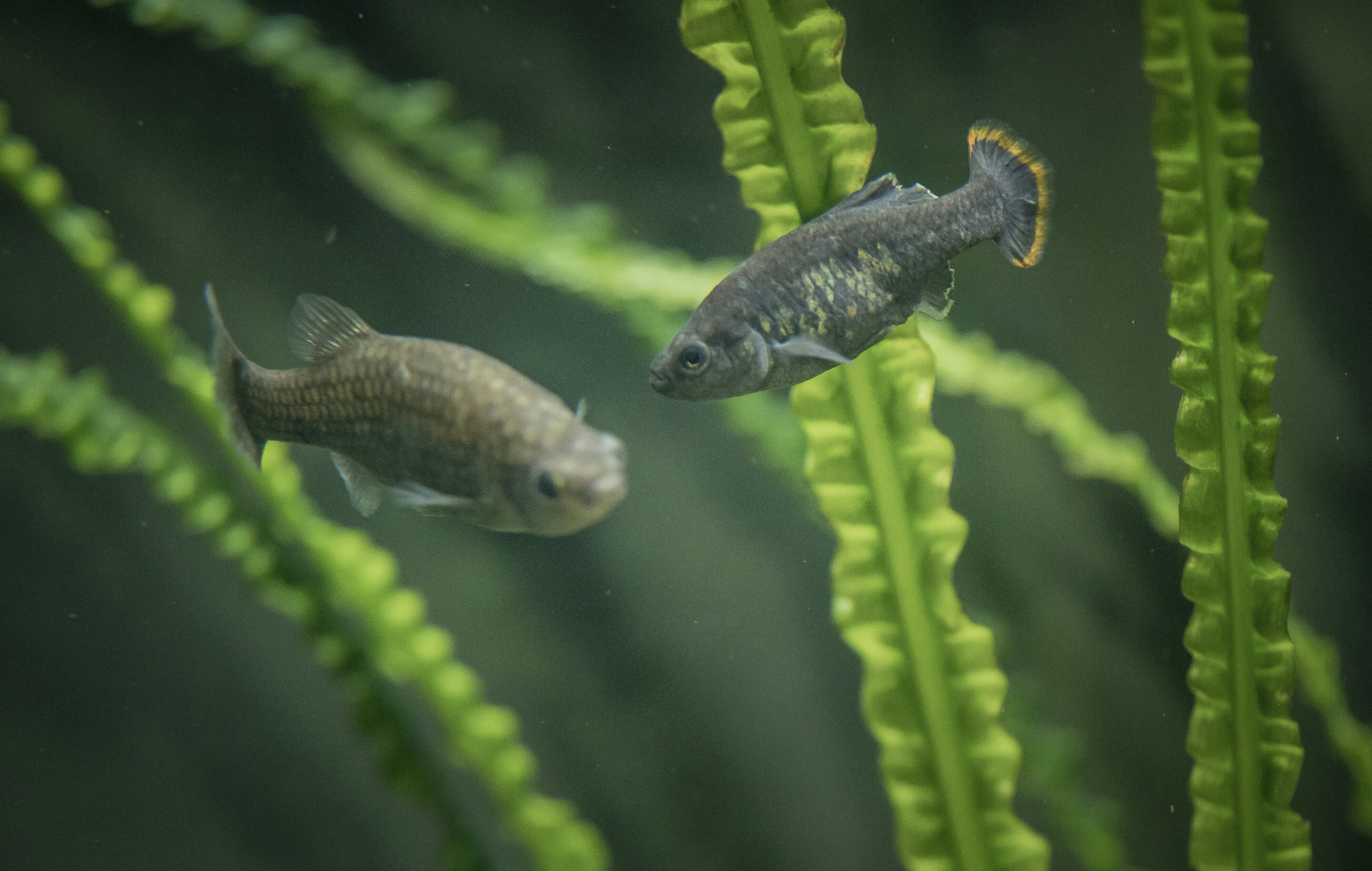
The Chester Zoo in Chester, England, has an aquarium with two "tequila splitfin" fish in it. The fish that swam in the spring-fed waters of west-central Mexico disappeared at the end of the 20th century, however scientists and local residents have achieved the unthinkable: the return of a species extinct in nature, but conserved in captivity, to its native habitat. The Chester Zoo via AP
There was a small fish called "tequila splitfin" that used to swim in a river in western Mexico. Scientists and residents have achieved the return of a species extinct in nature to its native habitat.
Its success is tied to the community's identity.
It started in Teuchitln, a town near the Tequila volcano. The little fish that fit in the palm of a hand had only been seen in the Teuchitln river, and a half-dozen students began to worry about it. It had vanished from local waters due to pollution, human activities and the introduction of non-native species.
Domnguez, who is now a 47-year-old researcher at the University of Michoacn, says that the elderly only remembered the fish because of its orange tail.
In 1998, a group of people from the Chester Zoo in England and other European institutions arrived to help set up a laboratory for Mexican fish. They brought several pairs of fish from the aquariums.
Domnguez and his colleagues gambled on the re-introduction of the fish to the river after they began reproducing in aquariums. They told us that when we returned them, they would die.
They looked for options. In 2012 they put 40 pairs there after building an artificial pond.
There were 10,000 fish two years later. The result guaranteed funding from the Chester Zoo, as well as a dozen organizations from Europe, the United States and the United Arab Emirates, to move the experiment to the river.
They studied parasites in the water, the interaction with predators, and introduced the fish in floating cages.
The goal was to reestablish the equilibrium. The key was not so much the scientists as the locals.
Domnguez said that when he started the environmental education program he thought they would turn a deafness to him.
The Conservatists succeeded with patience and years of puppet shows, games and explanations about the ecological and health value of "zoogoneticus tequila", the fish that help control mosquitos that spread dengue.
The residents made a nickname for the little fish. They made caricatures and formed a group of children. They clean the river and collect garbage.
Domnguez said it is difficult to say if the water quality is better because there is no previous data to compare. The river is cleaner, there are fewer non-native species and cattle are not allowed to drink in some areas.
The fish were growing fast inside their cages. They were marked so that they could be followed. In six months the population increased by 45%. The fish had expanded to another part of the river.
It takes a lot of time to bring extinct species back to life. The Arabian oryx is one of the successful examples. The Chester Zoo said that the tequila splitfin had joined.
The zoo said that the project has been cited as an International Union for the Conservation of Nature case study for successful global reintroductions.
The battle for species conservativism is an important moment, said the zoo's curator of lower vertebrates and invertebrates.
The red list of threatened species has the tequila split fin listed as being in danger. Pollution, over-extraction of water resources and other factors are putting pressure on Mexico's freshwater ecosystems. A report by the International Union for the Protection of Nature and the ABQ BioPark in the United States shows that more than one-third of freshwater fish in the country are threatened with extinction.
Domnguez and his team are working on a fish that is considered extinct in the wild. The Golden Skiffia could one day join "Zoogy" in the river.
The Associated Press. All rights belong to the person. This material may not be published, broadcast, rewritten or redistributed.
The Mexican fish that was extinct in the wild was successfully reintroduced on January 2, 2022.
The document is copyrighted. Any fair dealing for the purpose of private study or research cannot be reproduced without written permission. The content is not intended to be used for anything other than information purposes.
